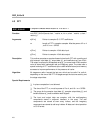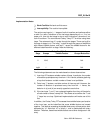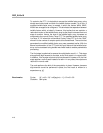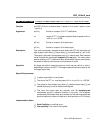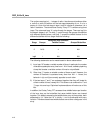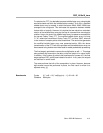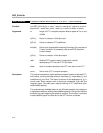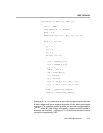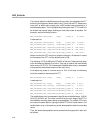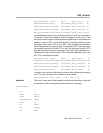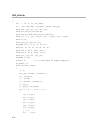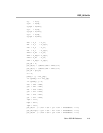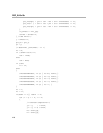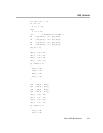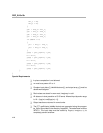
DSP_fft16x16r
4-15 C64x+ DSPLIB Reference
void dft(int n, short x[], short y[])
{
int k,i, index;
const double PI = 3.14159654;
short * p_x;
double arg, fx_0, fx_1, fy_0, fy_1, co, si;
for(k = 0; k<n; k++)
{
p_x = x;
fy_0 = 0;
fy_1 = 0;
for(i=0; i<n; i++)
{
fx_0 = (double)p_x[0];
fx_1 = (double)p_x[1];
p_x += 2;
index = (i*k) % n;
arg = 2*PI*index/n;
co = cos(arg);
si = −sin(arg);
fy_0 += ((fx_0 * co) − (fx_1 * si));
fy_1 += ((fx_1 * co) + (fx_0 * si));
}
y[2*k] = (short)2*fy_0/sqrt(n);
y[2*k+1] = (short)2*fy_1/sqrt(n);
}
}
Scaling by 2 (i.e., >>1) takes place at each radix-4 stage except the last one.
A radix-4 stage could give a maximum bit-growth of 2 bits, which would require
scaling by 4. To completely prevent overflow, the input data must be scaled by
2
(BT−BS)
, where BT (total number of bit growth) = log
2
(nx) and BS (number of
scales by the functions) = ceil[log
4
(nx)−1]. All shifts are rounded to reduce
truncation noise power by 3dB.




